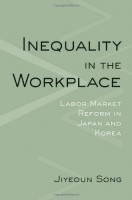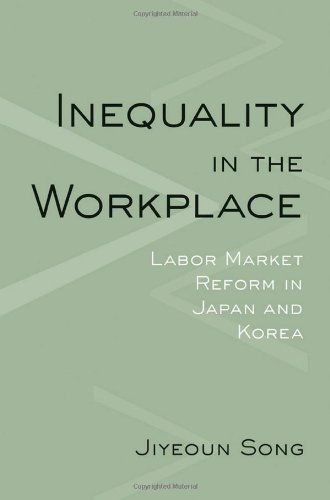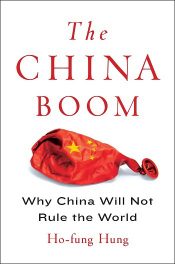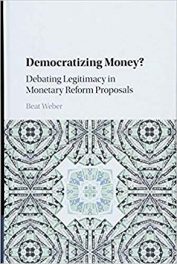 Author: Jiyeoun Song
Author: Jiyeoun Song
Publisher: Cornell University Press – 229 pages
Book Review by: Sonu Chandiram
This comparative study of the labor markets of Japan and Korea and the characteristics within each market is a rather unique one. Not much has been published before, at least in a comparative sense, on these aspects of the two countries’ economies, whereas much has been researched on and written about the labor markets in Europe and the United States.
Therefore this book is valuable for the new data and information it adds to the present knowledge of Japan and Korea’s workplace situations.
Japan and South Korea are two of the relatively more developed nations in Asia, and when compared with other countries in that part of the world, they are definitely more prosperous. I found this to be so, for the first time several years ago, immediately as I landed in Tokyo, and later, in Seoul. But there is a big difference in the per capita incomes of these two East Asian neighbors.
In 2014, the gross domestic product (GDP) per capita on a purchasing power parity or PPP basis in Japan was US $35,481 whereas South Korea’s GDP per capita on the same basis was about two-thirds or 67 percent of that, at $23,892 (which is 189 percent of the world’s average GDP of $12,641) according to the website www.tradingeconomics.com.
Of course PPP is an entirely different basis of comparison than on a regular GDP basis. It is a more realistic tool than regular GDP for measuring the local affordability of products and services relative to average incomes and the standard of living of the average individual. Measured on the basis of PPP, Japan’s GDP is the world’s third largest, whereas South Korea’s GDP ranks 15th in the world.
Ms. Jiyeoun Song takes a close look at reforms instituted in recent decades in the labor markets of these two Asian countries. Among other relevant matters, the five chapters of this compact hardcover book cover the following subjects as shown on its Contents page:
Introduction
- Japanese and Korean Labor Markets and Social Protections in Comparative Perspective
- The Politics of Labor Market Reform in Hard Times
- The Institutional Origins of the Labor Market and Social Protection in Japan and Korea
- Japan: Liberalization for Outsiders, Protection for Insiders
- Korea: Liberalization for All, Except for Chaebol Workers
Conclusion
The author writes in this book that both Japan and Korea have:
- Advanced labor market reform and confronted the rapid rise of a split in labor markets between protected regular workers and under-protected and underpaid non-regular workers.
- Implemented very different strategies in response to the pressure to increase labor market flexibility during economic downturns.
However, some of the actions each nation has taken are different from those of the other, such as these:
- Japanese policy makers have relaxed the rules and regulations governing employment and working conditions for part-time, temporary and fixed-term contract employees while retaining extensive protections for full-time permanent workers. This has made them vulnerable to adverse actions against them by their employers.
- South Korean politicians, in contrast, have weakened employment protections for all categories of workers.
A new sort of worker – the female “dispatched” workers – has emerged and become common in Japan. These are hired with short-term employment contracts through private employment agencies. The author writes of a television drama that shows “an increasing proportion of the female clerical workforce in the Japanese labor market being staffed by non-regular workers, such as dispatched workers…”
She points out that such hiring is not limited to the clerical sector. She says that most obasan (middle-aged female workers) working in retail stores, such as in supermarkets, are part-timers. Cleaners and security staff in buildings are also not full-timers but fixed-term contract workers who work on certain days for a fixed number of hours.
In Korea, before the Asian financial crisis, regular workers hired in large family-owned business conglomerates (e.g. chaebol) had guarantees of job security, high wages, and generous benefits. After that crisis, job security was no longer available, as employers wanted flexibility to control labor costs when sales declined.
This is a well-researched, well-organized book with a lot of detailed information. The author demonstrates good insight and understanding of the subject.
Ms. Jiyeoun Song is Assistant Professor in the Graduate School of International Studies at Sogang University in Seoul, South Korea.







